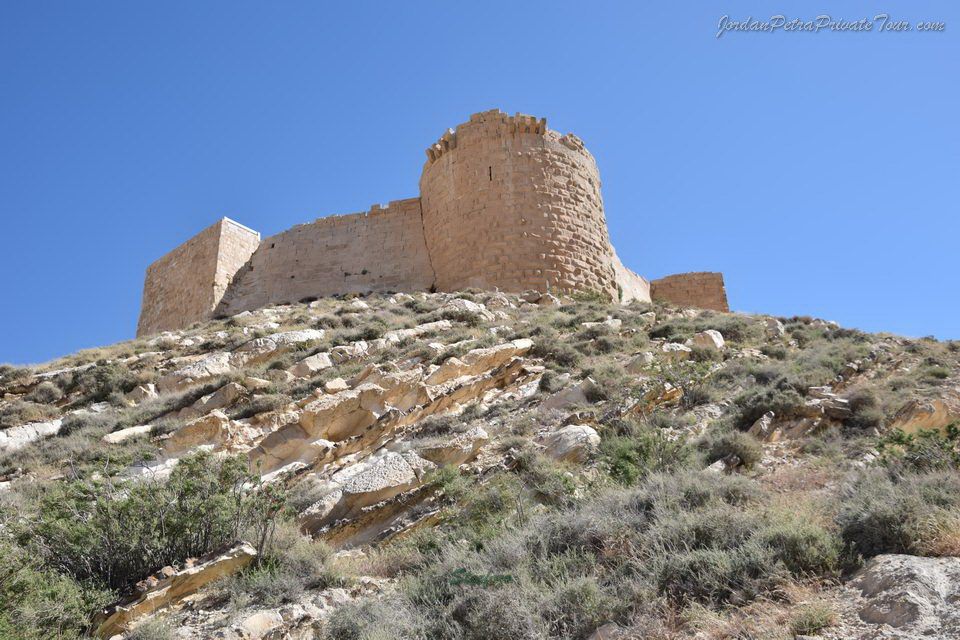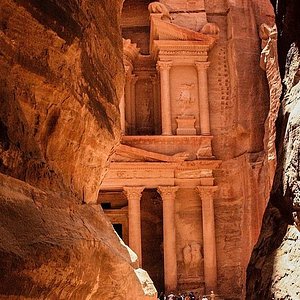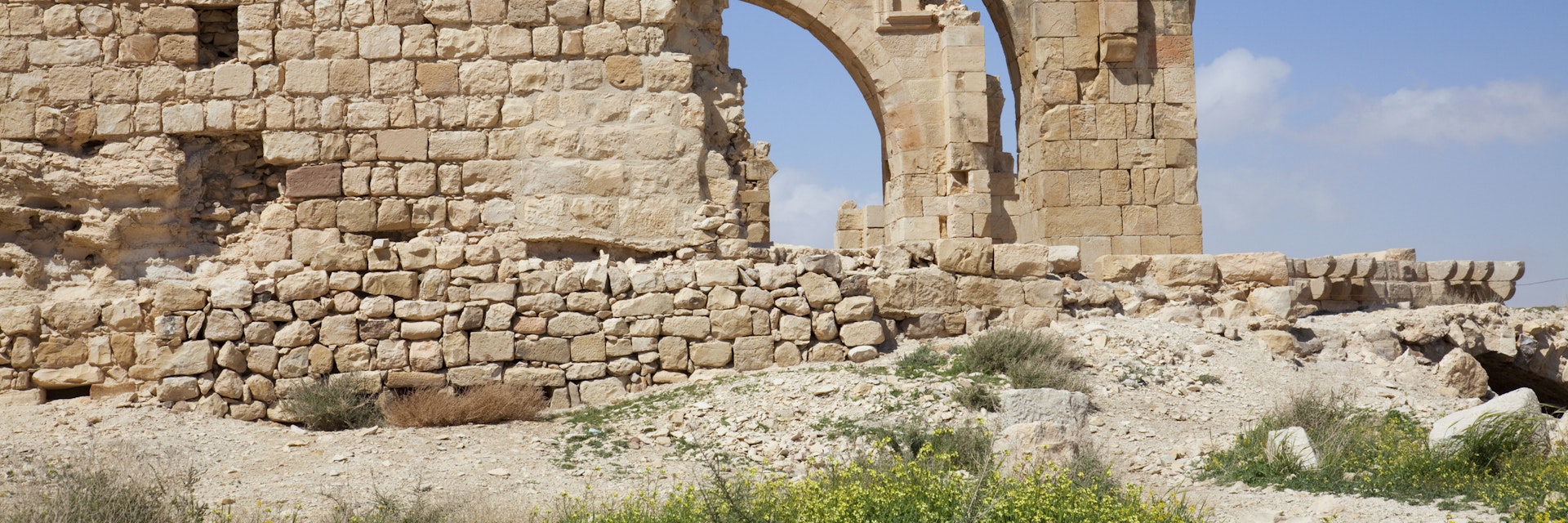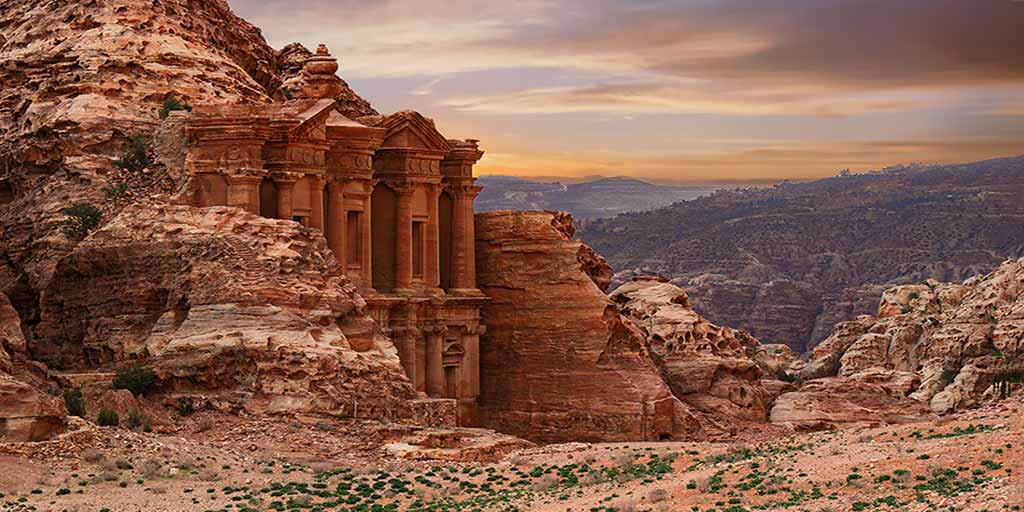Shobak Castle: A UNESCO World Heritage Site in Jordan
Steeped in history and breathtaking in its beauty, Shobak Castle in Jordan is a treasure trove of ancient architecture and stunning landscapes.
The castle, also known as Montreal, was built during the Crusader period and stands tall to symbolise Jordan's heritage and rich culture. Its strategic location in the heart of the Shobak region gives visitors a panoramic view of the surrounding mountains and valleys.
As a UNESCO World Heritage Site, Shobak Castle offers a glimpse into the past and holds a significant place in Jordan's history. This guide takes you on a tour of this remarkable site, revealing the secrets and stories that make it a must-visit destination for history lovers and tourists alike.

Introduction
Brief History of Shobak Castle
Shobak Castle, also known as Montreal Castle, is an ancient fortress in southern Jordan. Built-in the early 12th century by Baldwin I of Jerusalem, this Crusader ruin has a rich and fascinating history.
Strategically positioned along key trading routes, the castle served as a control point for this important location. It also dominated the main passage from Egypt to Syria, allowing its occupants to tax traders and those on pilgrimages to Mecca and Medina.
One of the challenges faced by the Crusaders in the Middle East was the lack of a reliable water source. To overcome this, a tunnel was constructed down the hill to two spring-fed cisterns, providing defenders with access to water without exposure to attackers.
Shobak Castle played a significant role in the medieval conflicts of the region. It was from this strategic location that Crusader raids on caravan convoys were launched, leading to tensions in the area and eventual war. In 1189, the fortress fell to the forces of Saladin after several months of siege.
The castle then changed hands multiple times, held by various rulers, including Saladin's brother al-'Adil and the Mamluk Sultan Baybars.
Shobak Castle lies in ruins today, but visitors can still explore its main outer walls, internal chambers, archways, and passageways. There is even a tunnel that runs through the hillside, although it's not for the faint-hearted.
With its rich history and impressive remnants, Shobak Castle is a must-visit UNESCO World Heritage Site in Jordan. [1][2]
Importance of Shobak Castle as a UNESCO World Heritage Site in Jordan
The importance of Shobak Castle as a UNESCO World Heritage Site in Jordan cannot be overstated. This ancient fortress, built by Baldwin I of Jerusalem in the early 12th century, holds significant historical and cultural value. Its strategic location along key trading routes made it a crucial stronghold for controlling the region. Additionally, the castle dominated the main passage from Egypt to Syria, allowing its owners to tax traders and pilgrims on their way to Mecca and Medina.
Despite its ruins, Shobak Castle is a testament to the Crusader period and the conflicts that engulfed the Middle East. Its capture by Saladin's forces in 1189 marked a turning point in history, and it was later awarded to his brother al-'Adil. The castle's ownership continued to change hands, with the Mamluks storming it in 1261.
Being designated as a UNESCO World Heritage Site further highlights the significance of Shobak Castle. It serves as a reminder of the region's rich history and cultural heritage. The site's preservation efforts and restoration work contribute to its longevity and ensure that future generations can learn from its past.
Visitors to Shobak Castle can explore the remaining main outer walls, internal chambers, archways, and passageways. A tunnel running through the hillside also allows for a truly immersive experience. Public transportation options, such as buses and taxis, make reaching the site easily accessible.
In conclusion, Shobak Castle's importance as a UNESCO World Heritage Site lies in its historical and cultural significance. It serves as a reminder of the conflicts and interactions that shaped the region while also providing visitors with a unique and immersive experience. Exploring the castle and witnessing its preservation efforts is essential for anyone interested in Jordan's rich history. [3][4]
Location and accessibility
The geographical location of Shobak Castle
Shobak Castle, also known as Montreal, holds its ground majestically atop a hill in southern Jordan. This UNESCO World Heritage Site, situated at around 1,300 meters, offers breathtaking panoramic views of the mountainous landscape. Located along the King's Highway, which connects the ancient city of Petra with the Dead Sea, Shobak Castle is easily accessible to visitors from various parts of the country.
Nestled amidst rugged and dramatic terrain, Shobak Castle is strategically positioned to guard the historic and once-pivotal trade routes. Its geographical location makes it an impressive sight to behold and showcases the military significance it held in centuries past.
The castle's position on a commanding hilltop gave its inhabitants clear visuals of their surroundings, granting them a tactical advantage during conflicts. This strong and secure location also gave them control over the movement of goods and people, strengthening their influence in the region.
Due to its historical and geographical significance, Shobak Castle attracts visitors from all corners of the globe, eager to explore its storied past and witness the sublime views it offers. Whether you arrive by car or opt for public transportation, the journey to this ancient fortress promises to be an unforgettable experience. The surrounding region is a treasure trove of natural wonders, making it a perfect destination for those seeking cultural and outdoor adventures.
So, if you're planning a trip to Jordan, include Shobak Castle. The combination of its historical importance and awe-inspiring setting makes it a must-visit destination for history enthusiasts and nature lovers alike. Spend a day exploring the castle's structures, walking in the footsteps of ancient warriors, and taking in the breathtaking views. Shobak Castle deserves its place among Jordan's most cherished UNESCO World Heritage Sites.

Public transportation options for reaching the site
When visiting the Shobak Castle in Jordan, several options exist for reaching the site via public transportation. The cheapest option is to take a minivan from Amman's southern bus station, such as the Wihdat bus station or the Mujama Janobi station. These minivans typically cost around 5 JD and take about 4 to 5 hours to reach the castle from Amman.
Another option is to take a bus, such as the JETT bus, which offers a faster and more comfortable journey. The JETT bus travels directly from Amman to Petra without any stops in between, and the journey takes less than 4 hours. Tickets for the JETT bus cost around 11 JD.
If you're looking for a more scenic route, you can take the King's Highway, which runs along the edge of the Great Rift Valley. This winding mountain road offers superb scenery and is perfect for those interested in history and nature. However, there is no direct public transportation along the King's Highway, so hiring a taxi with a driver or renting a car to explore this route is recommended.
Overall, plenty of public transportation options are available for reaching Shobak Castle, allowing visitors to choose the option that best suits their budget and preferences. [7][8]

Nearby accommodations for visitors
Several nearby accommodations provide a comfortable stay for visitors to Shobak Castle in Jordan. Located along the Kings Highway in the west of Jordan, Shobak Castle is just a short distance from Petra, making it a popular stop on many organized tours of the region.
7 Caves Hotel
One option for accommodation near Shobak Castle is the 7 Caves Hotel in Al Jāyah, just 1.2 kilometres away from the castle. This hotel offers non-smoking rooms, free WiFi, and a restaurant, ensuring a convenient and pleasant stay for visitors.
Dana Sunset Eco Camp
Another option is the Dana Sunset Eco Camp, located in Dana, approximately 21 kilometres from Shobak Castle. This eco-friendly camp offers accommodation with free WiFi and a garden, providing guests with a unique and sustainable experience.
Al Nawatef Camp ECO camp
For those looking for a traditional Bedouin experience, the Al Nawatef Camp ECO camp is a great choice. Located 5 kilometres from the village of Dana, this camp offers guests the opportunity to immerse themselves in Bedouin culture while enjoying the surrounding area's natural beauty.
Other accommodation options
Other accommodation options near Shobak Castle include the Dana’s Trail Hotel, The Rock Camp Petra, and Dana Gate Lodge. These hotels offer various amenities such as gardens, terraces, restaurants, and comfortable rooms. [9][10]

History and significance
Historical background of Shobak Castle
Shobak Castle, also known as Montreal Castle, is a fascinating historical site that transports visitors back to the Crusader period of the 12th century. The castle was built by Baldwin I of Jerusalem in 1115 and served multiple purposes. Firstly, it aimed to extend the territory of the Frankish settlement east of the Dead Sea and control the desert road that linked Syria, the Red Sea, and Egypt. Baldwin's involvement in constructing the castle is evident in its name, Mount Royal. The castle was strategically positioned along key trading routes, making it important in military and economic terms.
During the Crusader period, Shobak Castle housed not only Frankish settlers but also a significant population of indigenous Christians and possibly some Muslims. Over the centuries, the castle underwent various additions and modifications by Muslim rulers such as the Ayyubids and Mamluks. In its prime, the lands surrounding Shobak were known for their agricultural products, including corn, olives, vines, sugar, and apricots.
The castle faced numerous challenges, including unsuccessful sieges by Saladin in 1171 and devastating attacks in 1182 and 1187. After the Battle of Hattin in 1187, the garrison held out for almost two years until they surrendered to Al-Malik al-Adil and were given safe passage to Antioch.
Today, the ruins of Shobak Castle still bear witness to its rich historical past. Visitors can explore the main outer walls, internal chambers, archways, and passageways that have managed to withstand the test of time. A highlight of the visit is the opportunity to venture through a tunnel that runs through the hillside, offering a glimpse into the castle's intricate defences.
For history enthusiasts and those intrigued by Crusader architecture, Shobak Castle is a must-visit destination in Jordan. Its historical significance and stunning natural surroundings make it a truly captivating experience for all. [11][12]

Importance of the castle in the Crusader period
The castle of Shobak played a significant role during the Crusader period in the 12th century. Built by Baldwin I of Jerusalem, the castle was strategically positioned along key trading routes, allowing it to control a crucial strategic location. This enabled the castle to tax traders and pilgrims on their way to Mecca and Medina. However, like many Crusader castles in the Middle East, Shobak faced the challenge of lacking reliable water sources. To overcome this issue, a tunnel was constructed to connect the castle to two spring-fed cisterns, ensuring a steady water supply for its defenders.
The castle's importance during this period is evident in the conflicts it witnessed. Many Crusader raids on caravan convoys were launched from Shobak, leading to regional tensions and eventual warfare. Saladin's forces besieged it for several months before falling in 1189. After its capture, the castle was awarded to Saladin's brother, al-'Adil, who held it until 1193. The castle remained a point of contention in negotiations between the Crusaders and the Ayyubids.
Although now in ruins, Shobak Castle still bears witness to its rich history. The main outer walls and several internal chambers, archways, and passageways still stand. Visitors to the castle can explore these ancient structures and even venture through a tunnel through the hillside. Shobak Castle is a testament to the Crusader period and a key attraction that offers visitors a glimpse into Jordan's fascinating past. [13][14]

Preservation efforts and restoration work
Preservation and restoration efforts have played a crucial role in ensuring that the historical significance of Shobak Castle is acknowledged and maintained.
Recognising the castle as one of the best-preserved existing Crusader castles, officials have taken steps to enhance facilities within the castle to accommodate larger numbers of tourists. This undertaking is part of the ongoing efforts by the Jordanian Ministry of Tourism and Antiquities (MoTA) to conserve and restore the castle and its surrounding areas.
Restoration experts are working diligently to renovate Ottoman and Mamluk buildings in the town, to convert some of them into small-scale tourism businesses. The idea behind this restoration work is to preserve the historical value of Shobak Castle and stimulate local development and tourism in the southern town.
Moreover, the University of Florence, in collaboration with the Shobak Municipality and the EU, is leading a project to promote the historical and natural beauty of the area. By bringing attention to the overlooked aspects of Shobak, such as its Crusader castle and Ottoman-era homes, they hope to attract more visitors and ensure that the city gets the prominence it deserves.
Through these preservation and restoration efforts, Shobak Castle is being safeguarded for future generations to appreciate and explore. [15][16]

Architecture and design
Overview of the castle layout and structures
The castle of Shobak, also known as Montreal or Mons Regalis, is a magnificent ancient fortress in Jordan. Constructed in the early 12th century by Baldwin I of Jerusalem, this Crusader stronghold was strategically positioned to control the trade routes between Syria and Egypt. Perched on a conical hilltop, the castle boasts a unique feature: a good shaft that could be accessed through 375 steps leading down to a water vein. This impressive advantage allowed Shobak to withstand Saladin's attacks longer than the Crusaders' main castle, Kerak.
Over the years, the castle underwent various modifications and damages. The Ayyubids, who gained control of the fortress after the Crusaders, fortified the walls and adorned the complex with elaborate inscriptions, palatial quarters, and beautiful gardens. Later, the Mamelukes transformed Shobak into their administrative centre in South Jordan. The Ottomans and subsequent settlement also left their mark on the castle, resulting in the ruins we see today.
Despite the damages and alterations, the ruins of Shobak Castle remain awe-inspiring. As you explore, you will be greeted by stunning panoramic views, partially collapsed openings that allow sunlight to create enchanting shapes on the flooring stones, and rooms where the end walls have fallen into the deep valley below. It is a visual dialogue between the ancient structures and the captivating Jordanian landscape.
If you are planning a visit to Jordan, do not miss out on the opportunity to explore this UNESCO World Heritage Site. The castle of Shobak offers a unique glimpse into the rich history and architectural marvels of the Crusader period. [17][18]

Characteristics of Crusader Design and Architecture
The design and architecture of the Crusaders can be seen in the impressive ruins of Shobak Castle. The Crusaders were known for their military prowess, and their castles reflected this with their strategic locations and fortified structures.
Shobak Castle, also known as Montreal, was built on a conical hilltop, providing a commanding view of the surrounding landscape. One of the striking characteristics of Crusader design is the use of defensive features, such as thick walls, narrow openings, and strategically placed watchtowers. These features allowed the defenders to hold out against enemy attacks for extended periods.
Another notable aspect of Crusader architecture is the incorporation of religious elements. Churches and chapels were often built within the castle complex, showcasing the Crusaders' strong religious convictions. In the case of Shobak Castle, there are remains of two ecclesiastical buildings, which have attracted visitors' attention for many years.
The blend of military and religious elements in Crusader design creates a unique atmosphere within the castle walls. As visitors explore Shobak Castle, they can marvel at the well-preserved ruins, the grandeur of the castle's layout, and the intricate details that speak to the craftsmanship of the Crusaders. [19][20]

Final thoughts and recommendations for visitors.
Shobak Castle in Jordan is a UNESCO World Heritage Site that offers a rich history and incredible architectural marvels. Visitors must explore the castle's brief history, highlighting its significance in the Crusader period and its role in extending Frankish settlement in the region. Additionally, the castle's geographical location makes it a strategic point, as it controls the desert road between Syria, the Red Sea, and Egypt.
When planning a visit to Shobak Castle, it is important to consider public transportation options. The site is located south of Kerak and about 25 km north of Petra, making it accessible by various means. Moreover, visitors can find nearby accommodations for a comfortable stay, with options ranging from luxurious resorts to eco-lodges in the surrounding nature preserves.
Preservation efforts and restoration work have been carried out in recent years to maintain the castle's historical significance. Thorough surveys and consolidation have helped preserve its original structures and ensure a captivating experience for visitors. The castle's layout and structures exemplify the characteristics of Crusader design and architecture, offering a glimpse into the past.
Overall, Shobak Castle is a must-visit destination in Jordan for history enthusiasts and those seeking to immerse themselves in the rich cultural heritage of the region. With its remarkable historical background, architectural wonders, and picturesque surroundings, a trip to Shobak Castle is a truly rewarding experience for any traveller. [21][22]
